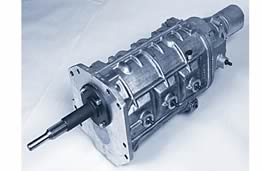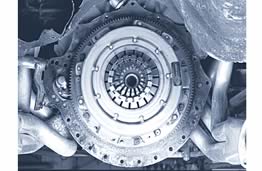Nothing says horsepower quite like rowing through the gears in a 1960s vintage, big block-powered muscle car. But like all good things, there is a price to be paid for mechanical nirvana. The acceleration-oriented rear axle gears in many muscle cars can put the hurt on top-end speed (not to mention fuel economy), and the 3,000-rpm drone at highway speeds sure puts the hurt on your ears on long distance road trips.
But there is a way to enjoy the rush of a manual transmission without the speed and sound penalties: An overdrive transmission. With a five- or six-speed manual box, you get the acceleration benefits of that big rear axle gear, plus the ability to hit those big mile-per-hour figures and cruise at diesel-like rpm at highway speeds.
So why isn’t every four-speed muscle car owner rushing to stuff an overdrive transmission in their ride? Authenticity and restoration issues aside, there are two big reasons. Most overdrives are not a simple bolt-on proposition, and most OEM boxes cannot handle the torque output of a big block V8.
But thanks to Richmond Gear’s six-speed transmission, these problems are surmountable. The Richmond box has features that make it perfect for use in a 1960s-era car:
• 450 foot-pounds torque rating
• All aluminum construction—weighs just 108 pounds
• Wide range of gear ratios available—can tailor transmission for virtually any application
• Versions for popular GM, Ford, and Mopar input spline counts and bellhousing patterns
The standard Richmond box comes with 3.27 (1st), 2.13 (2nd), 1.57 (3rd), 1.23 (4th), 1.00 (5th) gears and your choice of a 0.76, 0.81, or 0.86 ratio 6th gear. But since there are dozens of other ratios available, you can tailor the transmission for specific applications—road racing or long-distance touring, for example.
Not long ago, a friend of ours wanted a Richmond box for his 1969 Charger R/T. The Charger has a 492 cubic inch stroker 440, a Hemi-spec A-833 four-speed, and 4.10 rear axle gears into the factory 440/four-speed car. The combination produces neck-snapping acceleration, but conks out just shy of 120 miles per hour—and turns at almost 3,200 rpm at 65 miles per hour in fourth gear.
To better match the intended use of the car, a six-speed with a 3.04/2.13/1.57/1.24/1.00/0.76 gear set was added, along with a 3.33 ratio gear (a rare piece, by the way) for the Dana 60 rear axle. This combination matches the original A-833 four-speed’s gear ratios in terms of acceleration, allows much higher top speeds, and lets the big block loaf at less than 2,000 rpm at 65 miles per hour in sixth gear.
While the Richmond box is about the same length as GM’s Muncie and T-10 four speeds, installing it in the Charger was not a simple bolt-in. The Richmond’s case is almost 10 inches shorter than the A-833’s, requiring a longer driveshaft. The Richmond’s shifter location is seven inches further back than the factory shifter. While this puts the shifter in a much better position (the factory location is too far forward for powershifting), floorpan and crossmember modifications are required to get things to fit.
Even though it was no walk in the park, the benefits of installing a Richmond six-speed in a classic Mopar muscle car are well worth the effort. There were no kits available when we documented this swap, but today companies like Keisler Automotive Engineering offer swap kits and components to make the job easier. When you can get 1960s-style acceleration, awesome high-speed capability, and the ability to hold a conversation at highway speeds in one package, you better grab it quick.
Parts List
Richmond Gear Six-Speed Transmission, 3.27/2.13/1.571.23/1.00/0.76 gear ratios (RMG-7021618AA)
Lakewood Bellhousing (LAK-15330)
Hays Billet Steel Flywheel (HAY-11-430)
Energy Suspension GM Transmission Mount, Black (ENS-3-1108G)




















What is the price of this transmission?
Currently $3,874.97 via Summit Racing.
If I put this into a 68 Coronet with a 440, what mods would I have to do to make to make it fit?
Hi Matt, Summit Racing’s tech line can best help you with that. Please give it a call at 330-630-0240. Thank you!
You were saying you guys reproduce the trans tunnel pieces ? Also could you email me the pics of tbe crossmember mods . Kinda hard to see them clearly .